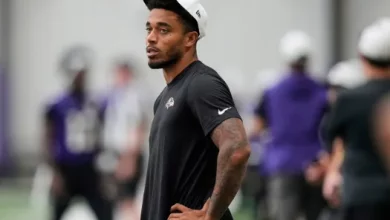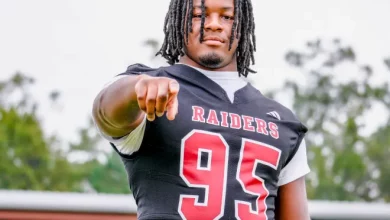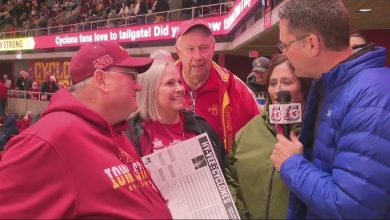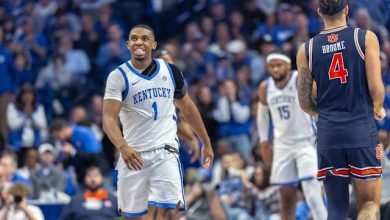Jerry Jones one of 3 NFL GMs skipping podium availability at NFL Combine
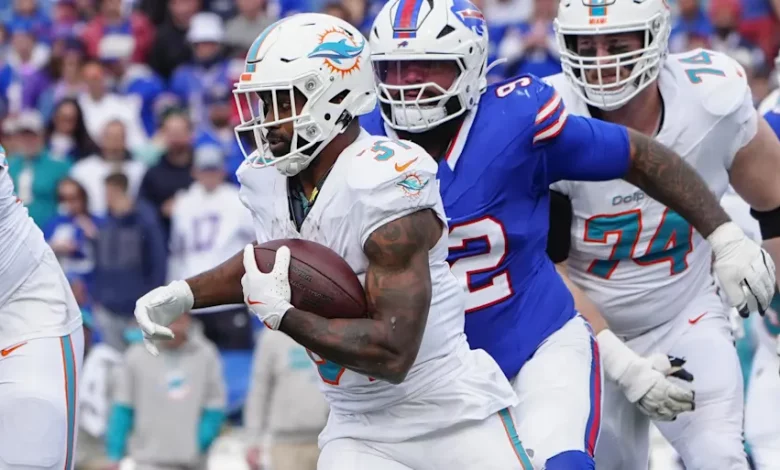
The NFL Scouting Combine, held each year in Indianapolis, is one of the most important events on the NFL offseason calendar. The weeklong event serves as an opportunity for teams to evaluate hundreds of draft-eligible players through physical drills, psychological tests, interviews, and one-on-one meetings. While scouts, coaches, and executives get the bulk of the attention during these evaluations, the NFL Combine is also a time when general managers (GMs) and team executives engage with the media. These podium appearances are key moments where GMs can offer insights into their teams’ plans, discuss draft strategies, and sometimes make bold statements that influence fan expectations.
However, in 2025, a notable absence at the podium stands out: Jerry Jones, the owner, president, and general manager of the Dallas Cowboys. Jones has been a key figure in the NFL for decades, and his colorful personality and sometimes controversial statements have often made headlines. His decision to skip the podium availability at this year’s Combine is causing a stir. In fact, Jones is one of just three GMs not participating in this public-facing part of the Combine. The decision has led to speculation regarding its implications for both Jones and the Cowboys, a team that remains in the hunt for a Super Bowl but has faced increasing scrutiny in recent years.
The Significance of the Combine and the Role of GMs
Before diving into the reasons for Jerry Jones’ absence, it’s essential to understand the significance of the NFL Combine and why GMs typically take the podium. For years, the Combine has been more than just a physical evaluation for college prospects. It’s a media event that provides teams an opportunity to articulate their vision for the upcoming season, address any rumors, and offer insights into how they intend to shape their rosters. It is, for all intents and purposes, a key moment in the league’s offseason where GMs and executives reveal how they see their team’s future, answer questions about key players, and field inquiries about strategies.
For most NFL general managers, speaking at the Combine is a routine part of the job. The media coverage during this event is massive, and GMs can use the occasion to share information on their draft strategy, the state of their team, and even provide updates on potential contract negotiations with players. It is also a moment where GMs can project confidence, making bold statements that energize the fanbase or address lingering doubts from last season.
Given the Cowboys’ high profile, Jerry Jones’ podium appearances have historically been among the most anticipated. Known for his hands-on approach and willingness to engage with the media, Jones often uses these opportunities to discuss everything from his team’s draft targets to his thoughts on key personnel decisions. His charisma and candidness have made him a media darling, even if his remarks sometimes attract controversy. Therefore, his decision to skip the podium in 2025 is an unusual move that invites questions about his motivations and what it could mean for the Cowboys’ future.
Why Is Jerry Jones Skipping the Podium?
There are several reasons why Jerry Jones may have chosen to skip the podium availability at the NFL Combine in 2025, and they likely relate to both personal choices and strategic considerations surrounding the Dallas Cowboys’ future.
1. Focus on Internal Strategy and Decision-Making
The Dallas Cowboys are in the midst of a pivotal offseason. While the team has maintained a strong presence in the playoffs in recent years, the Super Bowl has remained elusive. After an early exit in the 2024 playoffs to the Philadelphia Eagles, questions about the team’s roster, leadership, and long-term direction have become more prominent. As a result, Jerry Jones is likely spending more time behind the scenes, engaging with his front-office team, coaches, and scouts, rather than addressing the media at this early stage in the offseason.
Jones has always been heavily involved in roster decisions, but the current state of the Cowboys requires a nuanced approach. With a franchise quarterback in Dak Prescott still under contract and critical decisions looming about other key players, such as Micah Parsons, CeeDee Lamb, and Leighton Vander Esch, Jones may be opting to focus on the private, internal aspects of team management. Whether it’s negotiating contracts, addressing salary cap concerns, or discussing potential trades, these internal discussions are far more important than speaking to the media at the Combine. Jones likely recognizes the weight of these decisions and may prefer to keep the public out of it until he is ready to make announcements or take action.
Additionally, with the Cowboys’ roster largely intact, there may not be as much to discuss publicly. Many of the team’s key positions are solidified, and any major changes to the roster would likely come in the form of personnel decisions that are either being actively negotiated or will unfold during free agency or the draft. Jones may not see the point of making any public comments until he has more concrete updates to share.
2. Avoiding Unwanted Media Scrutiny
Jerry Jones has long been one of the most visible owners and general managers in the NFL. While this has often worked to the Cowboys’ benefit, it also means that every comment he makes is scrutinized closely by both the media and the fanbase. In a year where the team has underperformed expectations in the postseason, Jones may have recognized that any public comments he makes could spark unwanted controversy or scrutiny. His past podium appearances have often been met with both praise and criticism, with every word being dissected for its implications on the Cowboys’ future.
By opting not to appear at the Combine podium, Jones may be hoping to avoid being pulled into discussions about last season’s playoff loss or being forced to answer difficult questions about the team’s championship window. After the Cowboys were eliminated by the Eagles, much of the discussion surrounding the team centered on whether or not Prescott was the right quarterback to lead them to a Super Bowl, whether head coach Mike McCarthy should remain at the helm, and whether the team had enough talent to compete at the highest level. For Jones, these are delicate issues that may be best left to others to address for now.
Furthermore, Jones has often been the lightning rod for criticism following playoff disappointments. While some fans appreciate his open and candid approach, others have criticized his tendency to make bold statements that don’t always align with the team’s results. By skipping the podium, Jones can take a step back from the media spotlight and avoid exacerbating any public relations issues before they need to be addressed.
3. A Shift in Team Leadership Dynamics
In recent years, Jerry Jones has begun to delegate more responsibilities to his son, Stephen Jones, who serves as the Cowboys’ Executive Vice President and Director of Player Personnel. Stephen has increasingly taken on a larger role in the team’s decision-making process, especially when it comes to personnel evaluations, draft strategies, and salary cap management. Stephen has also handled many of the team’s more technical aspects, such as contract negotiations and roster planning.
With Jerry Jones stepping back from the podium at the Combine, this could signal a larger shift in the way the Cowboys are being managed. While Jerry will always be the ultimate decision-maker when it comes to the Cowboys’ direction, he may be choosing to let his son handle more of the public-facing duties, allowing Jerry to focus on high-level strategic decisions. This dynamic shift also allows Jerry to avoid overexposing himself in a media environment that is increasingly focused on the Cowboys’ ability to win a Super Bowl. The decision to have Stephen speak to the media and take on more visible roles could be a long-term move to ensure that the Cowboys’ leadership structure feels more unified, with Stephen gradually taking over more responsibilities.
4. Keeping Draft Plans Under Wraps
The NFL Draft is one of the most important events of the offseason, and the Cowboys, with their history of impactful draft picks, will be under pressure to make smart selections in 2025. Jerry Jones might be deliberately avoiding the Combine podium to keep the team’s draft plans close to the chest. In the past, Jones has sometimes been very open about his interest in certain prospects, but this year, the Cowboys’ front office may prefer to keep their strategies private to avoid tipping off other teams.
The Cowboys are entering a draft that could be critical in shaping their future, with needs at several key positions, such as wide receiver, defensive tackle, and cornerback. With so many teams keeping a close eye on Dallas’ moves, Jones might want to keep potential draft picks, trade scenarios, or free-agent signings out of the public eye until they are ready to act. This could be an intentional move to avoid giving away any strategic advantages, especially as the Cowboys remain a top contender in the NFC.
5. Health and Personal Factors
Lastly, it is also worth considering that Jerry Jones may have personal reasons for skipping the podium this year. Jones, who is now in his 80s, has experienced a number of health-related issues over the past several years, although he remains very active in the day-to-day operations of the Cowboys. It’s possible that Jones simply chose to take a break from the media glare and focus on the internal aspects of team management, ensuring that he is in the best possible health to make critical decisions moving forward. In the past, Jones has shown a willingness to step back when necessary, especially if his health or other personal matters are a priority.
Impact on the Cowboys and the NFL Community
Jerry Jones’ absence from the podium at the NFL Combine is an intriguing development for several reasons. It signals a potential shift in the way the Cowboys operate, with Jones perhaps opting to take a more hands-off approach in public-facing matters while still maintaining control over the franchise’s strategic direction. For fans, this could signal a season where the focus is on what happens behind closed doors—contracts, draft picks, and trades—rather than the public statements of one of the NFL’s most prominent owners.
While some might speculate that this move is a
sign of deeper issues within the Cowboys’ organization, it is equally possible that Jones simply recognizes the need for a more subdued offseason. Regardless, the Cowboys remain one of the most high-profile teams in the league, and any move made by Jerry Jones, no matter how small, will continue to be a topic of great interest.
In the end, Jones’ absence from the podium at the NFL Combine is a sign that, even after decades of dominating the NFL’s public stage, the Cowboys’ front office is evolving. Whether it’s to focus on internal team matters, avoid unnecessary media pressure, or hand over more responsibilities to his son, Jerry Jones’ decision marks a pivotal moment in the team’s management. The Cowboys will continue to be a team to watch, but for now, much of their direction will be shaped behind the scenes.



